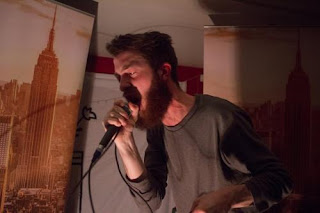London
Roots Festival is becoming a staple landmark of the capital's gig calendar,
bringing us the best in folk, roots and world music from all over the globe to
a variety of London's coolest venues.
This
year's line up, as ever, features everything from household names to cutting
edge contenders. We've included a full
list of forthcoming LRF gigs at the bottom, of this article, but here are the
five shows that Extricate is particularly looking forward to. See you down the front!
Sam
Kelly + The Lost Boys
Bristol-based
Sam Kelly and his band The Lost Boys delivers a gloriously raucous combination
of traditional folk sounds and more than a hint of maniacal punk rock
energy, First making their mark with
their debut EP 'Your Way Home' some five years back, they've been touring hard
and recruiting fans across the country, cementing their success with their
widely acclaimed 'Pretty Peggy' album last year.
Sun
Nov 11 – Bush Hall
Watch
'Chasing Shadows' here
Sound
of the Sirens
Another
act hailing from the West Country's
fertile roots scene, Exeter-based duo Sound of the Sirens break almost
every rule in the folk handbook by being young and female and making music that
is not only authentic but also accessible and boasting an enviably sharp
edge. Chris Evans was so impressed, he
stuck them on his 'TFI Friday' show immediately after seeing them - but don't
let that put you off, even he can be right every now and then!
Thu
Nov 15 – The Slaughtered Lamb
John
Smith
Smith
is probably the most traditional prospect in our list of tips, not just because
his raw, stripped back sound is based purely around guitar and vocals, but also
because he's thrown himself into the musical archeology of folk culture,
unearthing and reinventing songs from both sides of the Atlantic, sometime
hundreds of years old. That's one reason
to like the Liverpudlian, although even more
important is the quietb storm of his music and a voice that you can't
help but be emotionally engaged with.
Thu
Nov 15 – St Pancras Church
Watch
'the story of Hummingbird' here
Trampled
By Turtles
If
you think you know bluegrass, think again.
Trampled By Turtles take the genre by the scruff of the neck and give it
a good shake up, sending a surging energy through the well worn template of
banjo twang and dueling fiddles. They're
massive in their native US, but as being booked into the size-able Camden venue
the Electric Ballroom proves, this rare showing in good old Blighty is
feverishly anticipated too.
Fri
Nov 16 –, Electric Ballroom
Joshua
Burnside
Northern
Ireland's Joshua Burnside is one of a new generation of artist using new
technology to reinvigorate their offering of traditional sounds. Burnside is a multi-instrumentalist, with
accordion and banjo very much at the fore of his sound, but after travelling
the world in support if his award winning debut album 'Ephrata' he's been
letting all sorts of influences and collaborators in to keep things fresh,
Thu
Nov 22 – The Waiting Room
Watch
'A Man of High Renown' here
Full listings:
Sat Nov 10 –
Bruce Cockburn, St Pancras Church
Sun
Nov 11 – Sam Kelly + The Lost Boys, Bush Hall
Mon
Nov 12 – Vagabond Voices (Dean Owens & Yvonne Lyon), The Green Note, Camden
Tues
Nov 13 – Over The Rhine, Union Chapel
Wed
Nov 14 – Jake Morrell, The Slaughtered Lamb
Thu
Nov 15 – Finbar Furey, Union Chapel
Thu
Nov 15 – Sound of Sirens, The Slaughtered Lamb
Thu
Nov 15 – John Smith, St Pancras Church
Fri
Nov 16 – Trampled by Turtles, Electric Ballroom
Thu
Nov 22 – Joshua Burnside, The Waiting Room
Photo of Sound of the Sirens by Matt Austin
Text by John Robbins
2018


































